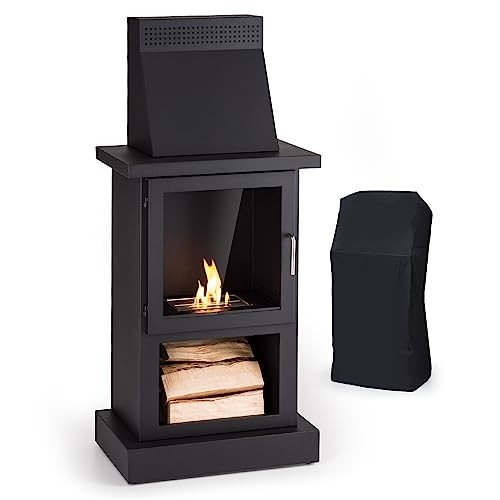Here's A Few Facts About Fireplaces. Fireplaces
Fireplaces in the UK: A Comprehensive Guide
Fireplaces have actually long been an important part of British homes, offering both visual appeal and functional heat. As Online Fireplaces UK turns chilly, the appeal of a cozy fire beckons, transforming any living area into a sanctuary. In this post, we will check out the different kinds of fireplaces offered in the UK, factors to consider for setup, upkeep pointers, and answers to often asked questions about fireplaces.
Kinds of Fireplaces
When selecting a fireplace for a UK home, a number of options are readily available, each with distinct features and benefits. The following table summarizes the main types of fireplaces popular in the UK:
Fireplace Type
Description
Pros
Cons
Open Hearth
Traditional fireplaces that burn wood or coal, providing a rustic feel.
Authentic ambiance; excellent heat distribution
Less energy-efficient; needs chimney upkeep
Gas Fireplaces
Usage gas or lp; can be direct vent or ventless.
Instantaneous heat; easy to operate; cleaner burning
Initial installation expense; might require gas line
Electric Fireplaces
Mimic a flame using LED lights and supply heat through electricity.
Safe; simple to set up; no flue needed
Less genuine; greater operating expense
Wood-burning Stoves
Closed-system fireplaces that burn logs, using high performance.
High heat output; eco-friendly when using sustainable wood
Restricted aesthetic compared to open hearth
Bioethanol Fireplaces
Environmentally friendly alternative that burns bioethanol, producing real flames.
No chimney needed; flexible style options
Can be costly to run; restricted heat output
Advantages and disadvantages of Each Type
Open Hearth
- Pros:
- Provides character to any home.
- Efficient heat circulation due to open flames.
- Cons:
- Less energy-efficient and more smoke than modern alternatives.
- Needs regular cleaning and upkeep of the chimney.
- Pros:
Gas Fireplaces
- Pros:
- Easy to control and operate with the flick of a switch.
- Cleaner option with less soot accumulation.
- Cons:
- Requires a gas supply and setup costs can be high.
- Might not offer the same atmosphere as a traditional fire.
- Pros:
Electric Fireplaces
- Pros:
- Simple installation without any chimney or flue required.
- Is available in different styles, looking like traditional options.
- Cons:
- Lacks the realism of real flames and can become expensive with constant use.
- Pros:
Wood-burning Stoves
- Pros:
- Highly effective and generates substantial warmth.
- Renewable resource when utilizing properly sourced wood.
- Cons:
- Requires additional space for log storage and routine maintenance.
- Pros:
Bioethanol Fireplaces
- Pros:
- Flexible positioning due to no need for traditional venting.
- Clean-burning and very little effect on indoor air quality.
- Cons:
- Can be less affordable for continuous use compared to gas or wood.
- Heat output is less reliable for bigger spaces.
- Pros:
Installation Considerations
When setting up a fireplace in a UK home, numerous factors should be considered:
- Building Regulations: Ensure compliance with local building regulations and safety policies.
- Chimney and Flue: Determine the requirement for a chimney or flue system based upon the type of fireplace selected.
- Ventilation: Proper ventilation is important for security, particularly with gas, wood, and bioethanol alternatives.
- Place: Consider the best place for the fireplace to optimize heat distribution and visual appeal.
- Expert Help: Engaging an expert installer can ensure a safe and precise setup tailored to the specific kind of fireplace.
Maintenance Tips
Regular upkeep of a fireplace is necessary for both safety and effectiveness. Follow these standards to keep your fireplace in peak condition:
- Chimney Sweeping: Have your chimney expertly swept at least as soon as a year to avoid blockages and minimize fire risk.
- Inspect for Damage: Regularly look for leaks, cracks, or damage, specifically in gas and wood-burning fireplaces.
- Tidy the Surroundings: Ensure the area around the fireplace is devoid of dust and combustible products.
- Inspect Carbon Monoxide Detectors: Test detectors frequently, especially in homes with gas-burning home appliances.
- Store Wood Properly: If using a wood-burning range, store wood in a dry location to decrease wetness content.
Frequently Asked Questions
What is the very best kind of fireplace for a small space?
For small areas, electric fireplaces or bioethanol designs are often advised due to their smaller sized size, security features, and visual appeals.
Are electric fireplaces more affordable to run than gas?
Electric fireplaces typically have a lower in advance expense, but depending on electrical power rates, they can be more pricey to operate long term compared to gas.
Do wood-burning ranges need a lot of maintenance?
While they do require some upkeep, such as cleansing and regular chimney sweeper, numerous property owners discover that modern wood-burning ranges are effective and fairly low maintenance compared to traditional open hearths.
Can I install a gas fireplace myself?
While some property owners may try DIY installation, it is extremely advisable to hire an expert for gas fireplace installations due to security issues and regulatory compliance.
How can I maximize the heat output of my fireplace?
To optimize heat output from any fireplace, think about the following:
- Keep doors and windows closed during use.
- Usage heat-efficient logs or fuels.
- Make sure proper air flow around the fire.
- Use fans or blowers that can distribute warm air throughout the space.
Fireplaces stay a cherished aspect within UK homes, offering heat, beauty, and a welcoming environment. Offered the variety of choices and their unique functions, property owners can select the perfect fireplace to complement their home while ensuring security and efficiency. With regular maintenance and a clear understanding of the setup requirements, anyone can enjoy the charm and convenience of a fireplace for many years to come.
